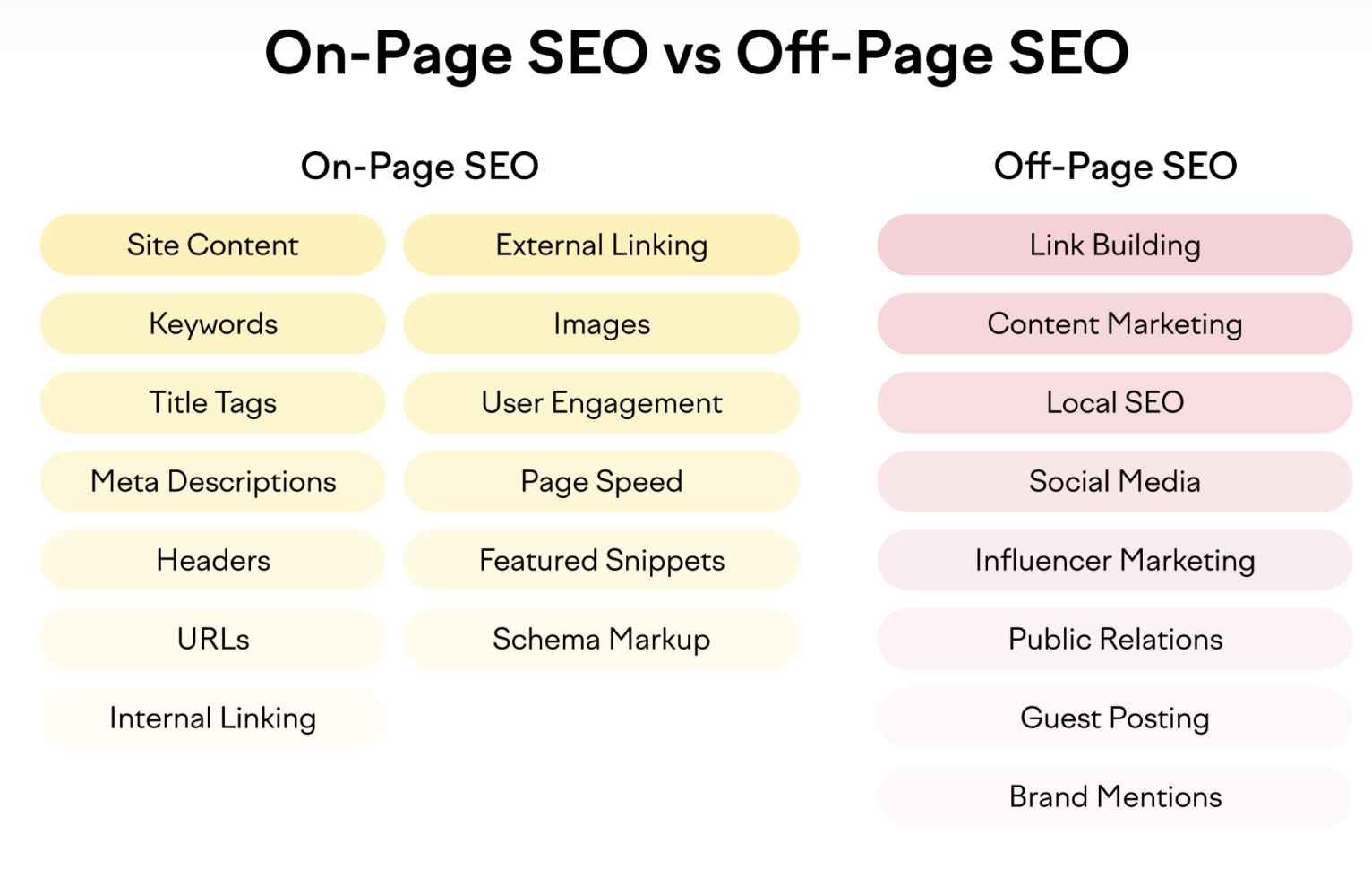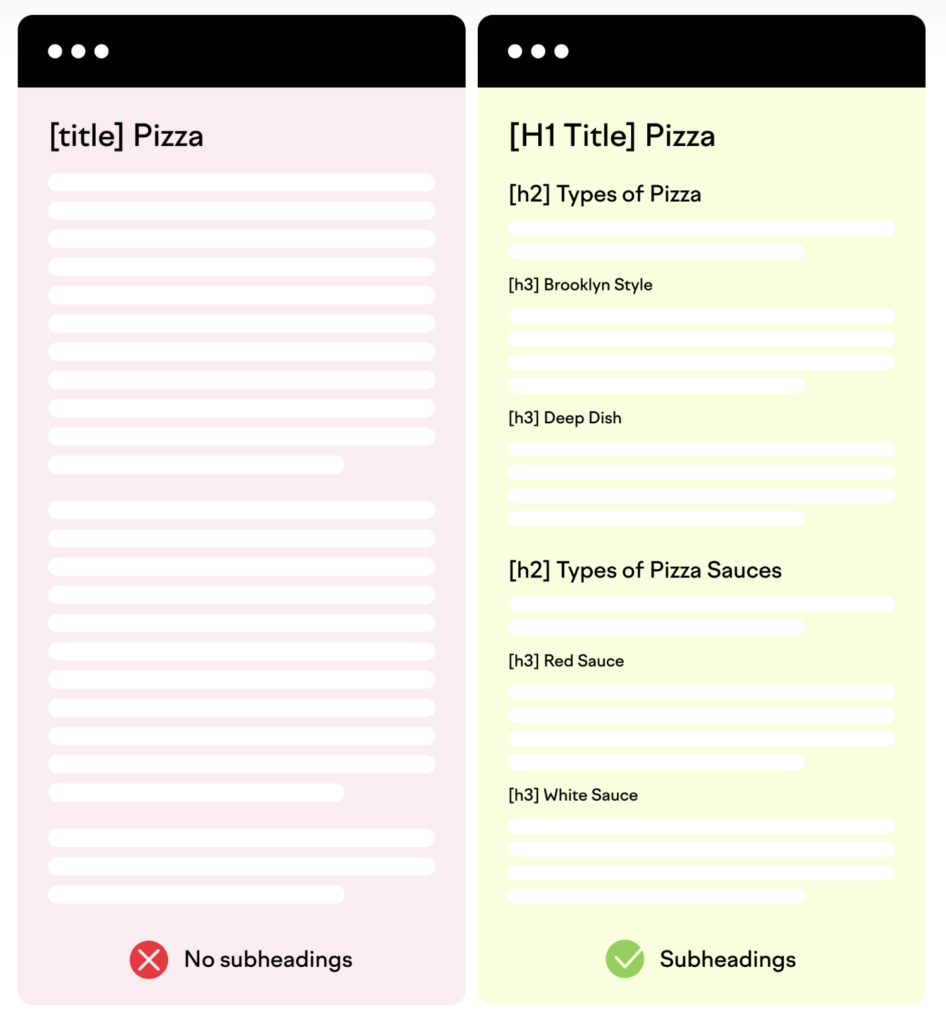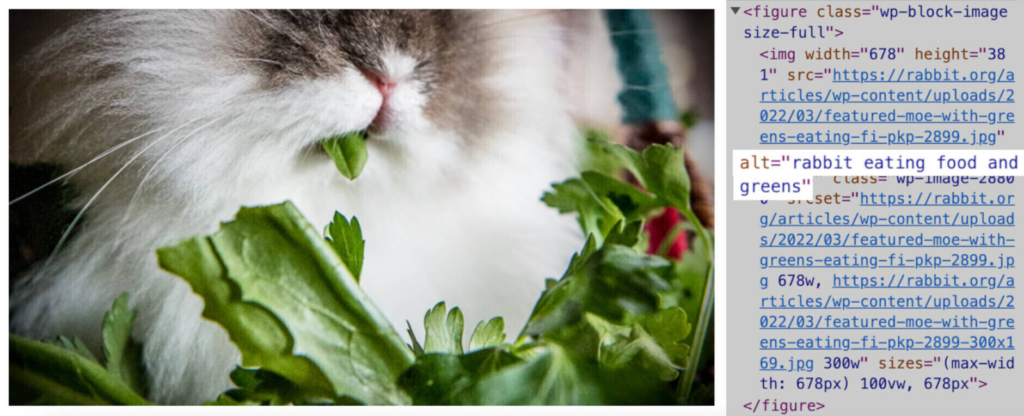Search Engine Optimization (SEO) is a cost effective way to get organic traffic from search engines and help in increase leads and sales online.
Search Engine Optimization (SEO)
What is SEO?: What it is and how we do it
What’s the Difference Between On-Page SEO and Off-Page SEO?
On-page SEO covers anything you can do on a webpage (or internally) to improve your rankings.
While off-page SEO covers anything you can optimize outside of your site (or externally) in an attempt to boost your rankings. Backlinks are arguably the biggest off-page SEO factor. Other examples include social media and PR.
Both are important parts of any good SEO strategy.
But you have more control over on-page SEO factors. So focusing on those is a good place to start when building out your SEO strategy.

How to Optimize Your Content for On-Page SEO
On-page SEO is much more than just adding keywords to your webpages.Here’s a brief explanation of how the ranking process works: Google starts by “crawling” or assessing pages on the web. Next, Google may “index” the page. It uses many factors—including on-site SEO factors—to determine what the page is about and how it should be ranked. If Google decides to index a page, it can then be accessed via Google Search. But Google doesn’t guarantee that every page will be indexed. Or show up in search results at all. So it’s important to tweak the on-page SEO elements covered below to best communicate to Google what your page is about. That way, it can rank you for relevant queries in the search results.
Let’s get started.
Write Unique, Optimized Content
One of the most important on-page SEO steps you should take is to create high-quality content that matches your readers’ search intent.
Place Target Keywords Strategically
So you have your target keywords. Now it’s time to strategically place them in your content.
Google scans your content to see what a page is about—and readers will likely do the same.
So you should include your target keywords in these key areas:
- H1
- First paragraph
- Subheaders (H2s, H3s, etc.)
This will help Google gain context about the topic of your page. And users will be able to quickly tell whether the page matches their search intent.
Optimize Title Tags
Title tags are pieces of HTML code that indicate what the title of a page is. And display that title in search engines, social media posts, and browser tabs.

Write Engaging Meta Descriptions
A meta description is an HTML element used to describe your webpage’s content.
It usually shows up on the SERP below your page’s title. Like this:

Use Headings and Subheadings to Structure Your Page
H1 tags and subsequent headings allow users to easily skim your page. And allow Google to understand the hierarchy of your page.
See how difficult it is to read a page without organized headings (compared to one that has them)?

Add Internal Links
Internal links are hyperlinks that point to different pages on the same site.
Internal links are an important part of on-page SEO optimization. Here’s why:
- They help search engines understand your site’s structure and how pages are related to each other
- They allow Google crawlers to discover and navigate to new pages
- They signal to Google that the linked-to page is valuable
- They help users navigate through your website (and keep them on your site longer)
Adding internal links from one page to another signals to Google that these pages are related. And helps Google understand whether the pages could match a user’s search intent—which can help your rankings.
Add External Links
External links are links on your site that point to other sites.
External links are important because they enhance user experience and build trust with your audience.
Include and Optimize Images
Including images in your content increases your chances of ranking in Google Images—which accounts for 22.6% of all searches. This is a great way to get more traffic to your site.
A good place to start optimizing your images is by writing descriptive alt text for them.
Alt text (short for alternative text) is text included in HTML code that describes an image on a webpage.
It has two main purposes:
- It provides context for search engine crawlers
- It allows people using screen readers to hear descriptions of images
Here’s an example:

Optimize for User Engagement
Google may also rank your page higher if users spend more time on it. If users leave too soon or without completing certain actions, Google might think there’s something wrong with your page.
You may have heard of the term bounce rate—but do search engines actually care about these metrics?
They sure do. Google uses what they call “interaction data” to determine whether a search result is relevant to a search query.
This data helps Google better analyze the relevance of a page via machine learning.
One way to ensure users get what they’re looking for when they land on a page is to put important written content “above the fold” (where users can see it before scrolling).
Check your site health, analyze its crawlability and issues, and get fresh ideas to boost rankings.
What’s Included in Our Search Engine Optimization Services?
SEO companies like YBG Marketing handle the day-to-day of monitoring and improving your online footprint, including making your website more visible in the search results and differentiating your brand across the web. We do this by including the following in our SEO services list:
Performing a Competitive Digital Analysis
- Complete a competitive digital marketing analysis to see how you stack up against your top three competitors in the search results using our proprietary data tracking software
- Perform keyword research and identify the top sales-driving search terms and keywords in your market area and industry
- Establish your baseline for website code and structure, content, local visibility, and off-site citations, then compare it against your competitors to create an actionable, sales-driving plan
- Create actionable revenue goals and corresponding SEO plans
Optimizing & Creating Local Local SEO
- Optimize your company’s Google My Business page for your business address or service area, phone number, maps listing, and business hours
- Optimize your company’s Facebook page for local SEO best practices
- Discover, manage, and monitor backlink opportunities to build authority
Optimizing Website Content & Code
- Install advanced Google Analytics and call tracking
- Make your website fast, secure and mobile friendly.
- Edit your website’s code and structure to be in-line with best SEO practices
- Edit and optimize your existing website pages for search visibility and creative content
- Perform conversion rate optimization on all website elements (like contact forms, buttons, navigational links) to ensure an optimal experience for your customers
Measurements & Analytics Reporting
- Provide transparent easy-to-understand monthly reports on the status and results of all your SEO efforts.
- Monitor analytics on a daily basis to watch for anomalies, hacks, penalties, or other sales-damaging events.
Creating New Website Content & Creatives
- Publish targeted, well-written website content that improves your local search rankings and provides a seamless user experience
- Create SEO-optimized creative content assets like infographics & videos
- Optimize and create content for voice search and digital assistants.
Tracking & Tweaking Your SEO Campaign
- Monitor your keyword rankings, organic traffic, calls, and leads
- Keywords rankings of your competitors
- Your top-three competitors
- Continually optimize and pivot your campaign for better performance over time.